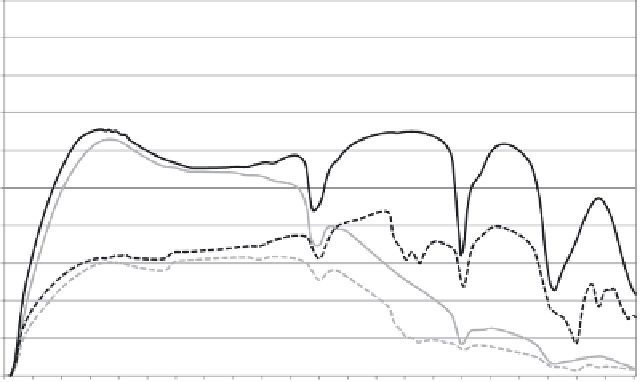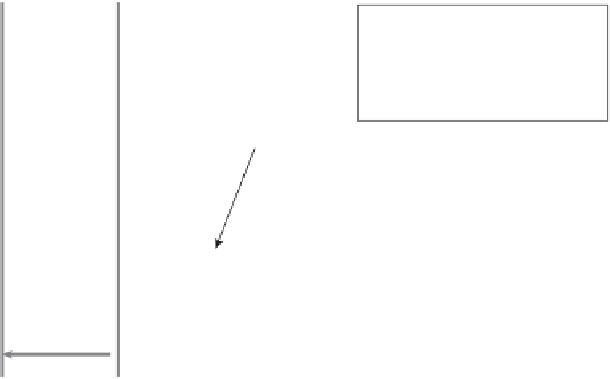Civil Engineering Reference
In-Depth Information
1. 0
Legend:
F4 = float glass, 4 mm
LE4 = low e-coated glass, 4 mm
aer = aerogel pane
gr = granular aerogel
F4-aer-F4
0.9
0.8
F4-aer-LE4
0.7
F4-gr-LE4
F4-gr-LE4
0.6
0.5
0.4
0.3
0.2
Visible range
0.1
0.0
l
(nm)
10.10
Spectral transmittance of different glazing samples with
granular and monolithic aerogel in the interspace (Buratti and Moretti,
2012b).
value of 91 was found for 14 mm thickness aerogel panes, which is a good
value if compared to the clear glass panes (
R
a
values of about 98). However,
literature data (Buratti and Moretti, 2012b) showed a very good quality
(
R
a
>
90) of the vision through the glazings with aerogel in the interspace:
the colour rendering index is lower than those of the windows with air in
the interspace (
R
a
94 with one low-e glass), but
it is equal to 93 for fl oat glasses and granular aerogel (14 mm) and to 92
with monolithic aerogel. With low-e glasses, the
R
a
index reduces to 90-91.
As a fi nal remark, the optical properties can be infl uenced furthermore
by the production process, i.e. by selecting optimal synthesis parameters
(Tajiri and Igarashi, 1998; Wagh
et al.
, 1999) and the transparency was
improved in the last years.
Both monolithic and granular aerogels could be assembled in the inter-
space of different glasses or polycarbonates to give transparent glazings.
Different transmission properties are found for glazing systems with mono-
lithic and granular aerogel in the interspace (Fig. 10.10). Samples with fl oat
glasses have the same trend, but the spectral transmittance of the samples
with granular aerogel is up to 50% lower than that of the monolithic, above
all in the visible range. The curve trend is representative of aerogel behav-
iour, reproducing the selective absorption peaks. Samples with low-e glass
show a different trend for wavelengths higher than 800 nm, due to the low-e
=
98 with fl oat glasses;
R
a
=




Search WWH ::

Custom Search